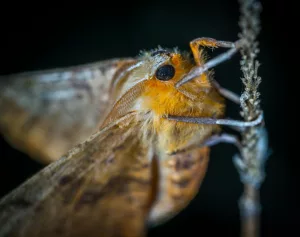Birds are nature’s architects, showcasing a remarkable level of skill and precision when building their nests. Their nest-building journey begins with the selection of a suitable site, an essential first step that sets the tone for a successful breeding season. Each bird species has distinct preferences for the location of their nests, influenced by factors such as protection from predators, access to food sources, and camouflage. These criteria are vital for ensuring the safety and survival of their offspring.
Site Selection: The Foundation of Nest Building
Birds are incredibly discerning when it comes to choosing a nesting site. For instance, the American Robin often selects sites that are well-hidden within shrubs or tree branches, offering a natural shield against predators like crows and squirrels. On the other hand, the Common Swift prefers high, inaccessible areas like cliffs or tall trees, where ground-based predators are less likely to reach.
Factors Influencing Site Selection
Birds consider several factors when selecting a nesting site:
- Safety from Predators: Camouflage and elevation are common strategies. For example, the Killdeer lays its eggs on open ground but relies on its cryptic plumage and distraction displays to protect them.
- Proximity to Food Sources: Birds like the Osprey choose nesting sites near abundant fishing waters to ensure easy access to food for their chicks.
- Climate and Weather Exposure: Some species, such as the Eastern Bluebird, prefer open fields to avoid harsh winds, while others may seek sheltered areas to escape rain.
Case Study: The Bald Eagle Bald Eagles prefer large trees near water bodies, which provide both a food source and a strategic vantage point. Their nests, known as eyries, can be massive, sometimes weighing over a ton, and are reused and added to each year.
Gathering Construction Materials
Once a suitable site is identified, birds embark on the task of gathering materials for their nests. This process is a testament to their resourcefulness and adaptability. Common materials include twigs, leaves, grass, mud, feathers, and even human-made items like bits of plastic or string.
Resourcefulness in Material Selection
Birds exhibit a keen ability to use available resources:
- Natural Materials: These are preferred for their lightweight and insulating properties. The Eurasian Coot is known for using a combination of reeds and water plants.
- Man-Made Objects: Urban birds, such as pigeons, often incorporate elements like paper or fabric scraps into their nests.
- Recycling: Some species, like the House Finch, are known to reuse materials from previous nests or even salvage from abandoned nests of other birds.
Example: The Bowerbird Bowerbirds are known for their elaborate nests that incorporate various colorful objects, from berries to bottle caps, to attract mates. This behavior highlights not only their resourcefulness but also an element of creativity in nest building.
Nest Architecture: A Diverse Blueprint
The architecture of bird nests is as diverse as the avian world itself. Each species displays unique building techniques and structures tailored to their specific needs. Some birds create intricate woven nests, while others prefer simpler cup-shaped designs.
Variety in Nest Design
- Cup Nests: Common among songbirds like robins, these nests are typically made from grass and twigs and lined with softer materials for comfort.
- Platform Nests: Birds like eagles and herons construct large, flat nests on tree branches or cliffs.
- Cavity Nests: Woodpeckers and some owls prefer nesting in tree cavities, which provide excellent protection from the elements.
Detailed Look: The Weaver Bird Weaver birds are renowned for their complex hanging nests, which they weave from grass and twigs. These nests are not only structurally sound but also aesthetically pleasing, often featuring a round entrance hole to deter predators.
The Mud Architects: Swallows and Martins Swallows and martins craft their nests from mud, forming cup-shaped structures that adhere to the sides of buildings or cliffs. This choice of material provides excellent insulation and protection from the elements.
Construction Techniques: Precision and Ingenuity
Building a nest requires meticulous attention to detail and precise construction techniques. Birds use their beaks and feet to manipulate materials, weaving and arranging them in a way that provides stability and support.
Techniques Employed by Birds
- Weaving and Knotting: Weaver birds use their beaks to tie knots and weave intricate patterns.
- Layering: Many birds, like the Song Thrush, layer materials to create a solid and insulated structure.
- Binding with Saliva: Some species use saliva as a binding agent to add strength to their nests.
The Role of Saliva: A Natural Adhesive Some bird species, like the Swiftlet, use their saliva as a natural adhesive to bind nest materials together. This technique enhances the durability of the nest, allowing it to withstand various environmental challenges.
Parental Collaboration: A Team Effort
In many bird species, both male and female parents contribute to the nest-building process. This collaboration strengthens their bond and ensures the successful completion of the nest within a relatively short timeframe.
Examples of Parental Roles
- Shared Responsibilities: In species like the albatross, both parents take turns incubating the egg and gathering nest materials.
- Role Specialization: Some birds, like the Northern Cardinal, have distinct roles, with the male collecting materials and the female focusing on construction.
Example: The House Sparrow House Sparrows often work together, with the male gathering materials and the female focusing on construction. This division of labor optimizes efficiency and ensures the best possible outcome for their offspring.
Environmental Factors: Overcoming Challenges
Environmental factors play a significant role in the nest-building process. Birds must contend with challenges such as inclement weather, predation, and human interference. Adaptations such as selecting well-hidden nest locations or using camouflage materials help mitigate these risks.
Adapting to Environmental Changes
- Weather-Proofing Nests: Some birds use waterproof materials or build in sheltered locations to protect against rain.
- Predator Avoidance: Birds like the Killdeer use distraction displays to lure predators away from their ground nests.
- Human Impacts: Birds are increasingly adapting to urban environments by utilizing buildings and other man-made structures.
Adaptation to Changing Environments Urban environments present unique challenges for birds. Some species, like the Peregrine Falcon, have adapted by nesting on skyscraper ledges, which mimic the cliffs they naturally prefer.
Nest Maintenance: Beyond Construction
Building a nest is just the beginning. Maintenance is crucial to ensure the nest remains a safe haven throughout the breeding season. Birds regularly inspect their nests, reinforcing weak spots and replacing damaged materials.
Maintenance Practices Among Birds
- Regular Inspections: Birds often check for and repair any damage caused by weather or predators.
- Cleaning and Hygiene: Some species remove debris and fecal sacs to maintain a healthy environment for their chicks.
- Reinforcing Structures: Birds may add new materials to strengthen the nest as chicks grow and require more space.
The Importance of Regular Inspections For example, Black-capped Chickadees are known to regularly clean their nests, removing fecal sacs and debris to reduce the risk of disease.
Human Impact and Conservation Efforts
Human activities can significantly impact bird nesting habits. Deforestation, pollution, and urbanization can disrupt traditional nesting sites, forcing birds to adapt or relocate.
Efforts to Support Bird Populations
- Nest Boxes: Providing artificial nesting sites can help species that have lost natural habitats.
- Habitat Preservation: Conserving forests, wetlands, and other critical habitats is essential for many bird species.
- Public Education: Organizations work to raise awareness about the importance of protecting bird habitats.
Conservation Initiatives Efforts to support bird populations include installing nest boxes and preserving natural habitats. Organizations like the Audubon Society work to educate the public and promote bird-friendly practices.
Common Mistakes and How to Avoid Them
Birds, like humans, can make mistakes in their nest-building endeavors. Choosing an unsuitable site or using inadequate materials can jeopardize the success of their nests.
Observations and Learnings
- Site Selection Errors: Some birds may choose sites too exposed to predators or harsh weather.
- Material Selection: Using materials that do not hold up well to weather can lead to nest failure.
- Adaptation and Evolution: Over time, birds learn from these mistakes, leading to changes in their nesting strategies.
Learning from Observations Birdwatchers and researchers can learn from these mistakes, offering insights into how different species adapt and evolve their nesting strategies over time.
The process of building a nest is a testament to the ingenuity and resilience of birds. Each step, from site selection to maintenance, reflects their adaptability and commitment to ensuring the survival of their species. By understanding and appreciating these natural architects, we can better support and protect the incredible diversity of bird life around us.



